- News
- Reviews
- Bikes
- Components
- Bar tape & grips
- Bottom brackets
- Brake & gear cables
- Brake & STI levers
- Brake pads & spares
- Brakes
- Cassettes & freewheels
- Chains
- Chainsets & chainrings
- Derailleurs - front
- Derailleurs - rear
- Forks
- Gear levers & shifters
- Groupsets
- Handlebars & extensions
- Headsets
- Hubs
- Inner tubes
- Pedals
- Quick releases & skewers
- Saddles
- Seatposts
- Stems
- Wheels
- Tyres
- Tubeless valves
- Accessories
- Accessories - misc
- Computer mounts
- Bags
- Bar ends
- Bike bags & cases
- Bottle cages
- Bottles
- Cameras
- Car racks
- Child seats
- Computers
- Glasses
- GPS units
- Helmets
- Lights - front
- Lights - rear
- Lights - sets
- Locks
- Mirrors
- Mudguards
- Racks
- Pumps & CO2 inflators
- Puncture kits
- Reflectives
- Smart watches
- Stands and racks
- Trailers
- Clothing
- Health, fitness and nutrition
- Tools and workshop
- Miscellaneous
- Buyers Guides
- Features
- Forum
- Recommends
- Podcast
TECH NEWS
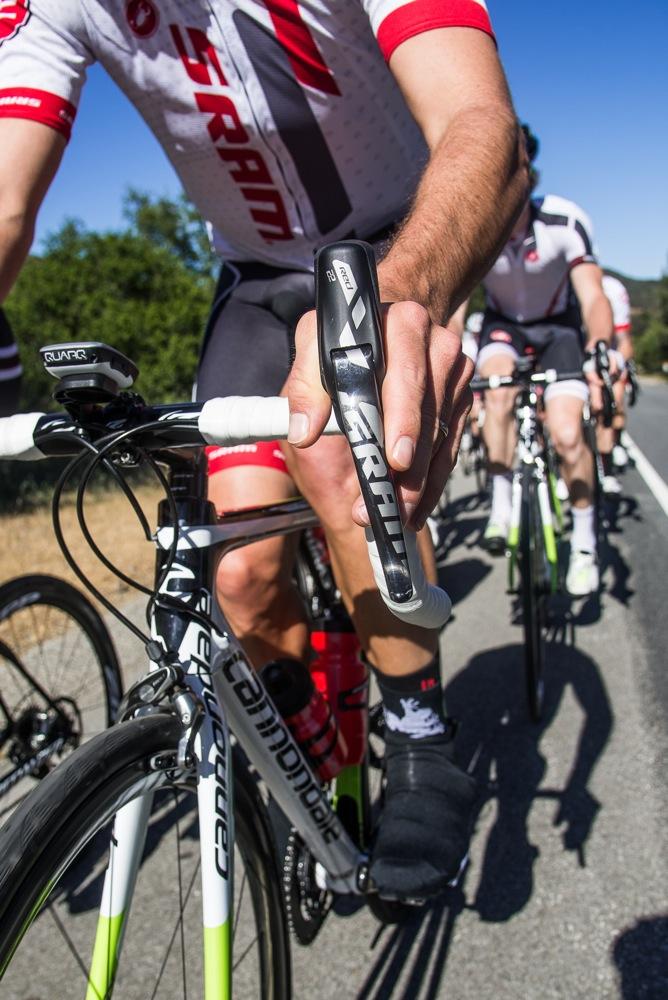 SRAM 22 Hydro lever action close up
SRAM 22 Hydro lever action close up2013: The year in cycling technology
2013 was the year that disc brakes really took off for road bikes. Kind of. Yes, we’ve had disc-equipped road bikes since this place was still fields but the whole disc revolution really took a step forward in 2013... before tripping over its shoelaces and ending up in a heap on the floor.
SRAM hydraulic brakes
Way, way back in the mists of time – ooh April, it must have been – we headed out to Californ-I-A for SRAM to reveal their new hydraulic disc brakes. I say ‘reveal’ but everyone with access to the internet and even a passing interest in bikes had known for a long time that the brakes were on the way. Still, we politely played along as if we didn’t know and looked surprised in all the right places.
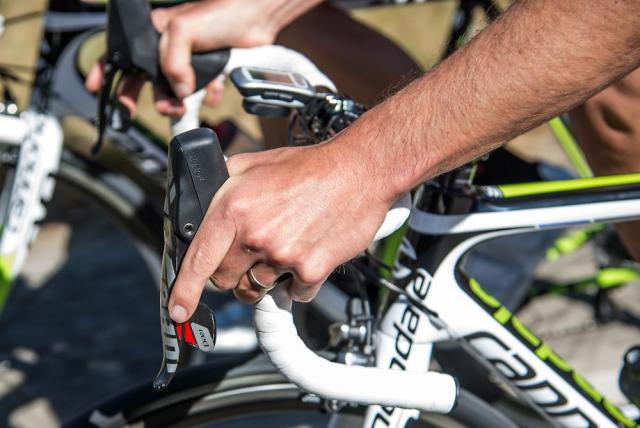
As it turned out, SRAM launched new Hydraulic Road Disc (HRD) brakes along with new Hydraulic Road Rim (HRR) brakes as part of redesigned and now 11-speed Red groupset (they did 10-speed compatible versions too). Oops, hang on! The new Red group isn’t 11-speed, it’s ‘True 22’. Why? Because SRAM are keen to emphasise that you can run the chain across the whole cassette no matter which chainring you’re using. Cross chaining – where the chain is running in the big chainring and big sprocket, or small chainring and small sprocket – is perfectly possible, whereas Shimano and Campag tell you not to do it.
Anyway, back to the brakes...
“This is a revolutionary jump in power, control, and modulation,” said SRAM. “Our road hydraulic systems will provide better control and performance in all conditions.”

Ah, well, about that “all conditions” bit. This is awkward. On 5 November we ran an article headlined “SRAM recalls RED 22 and S-700 hydraulic road brakes”. Ouch! SRAM said that the problem it had identified affected 3,553 brakes and estimated only 500 of the brakes worldwide were on bikes in bike shops or that had already been purchased.

Then, on 13 December, we ran a story on road.cc explaining how SRAM had upgraded its limited product recall to a warning to all those with the brakes on their bikes to stop using them immediately. SRAM said that failures had occurred during cyclocross races held in sub-zero temperatures when the master cylinder seals (the master cylinder is located in the brake lever) failed to hold pressure resulting in “abrupt loss of brake power, and an inability to stop the bike.”
Not great, particularly after such a high profile launch. In fact, a bit of a disaster. On 17 December we ran a story showing SRAM’s president, Stan Day, making a video apology.
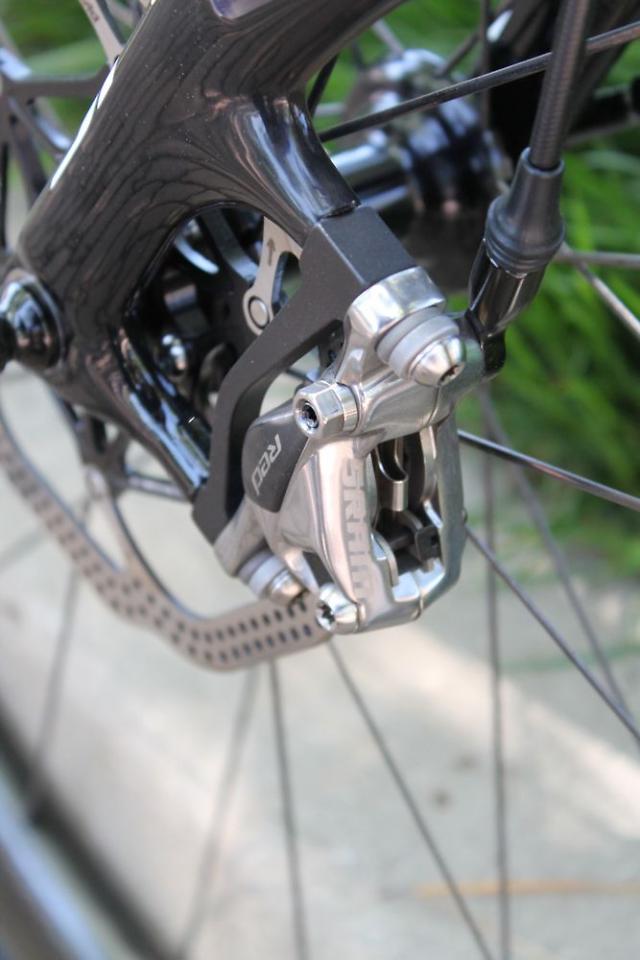
Finally, for the time being at least, SRAM outlined their hydraulic disc brake replacement plan. SRAM will offer customers affected by its recent recall replacement mechanical brakes and levers with the option of receiving the redesigned hydraulic brakes when they're available, or a cheque for €150. It will also reimburse dealers a ‘fair labour cost’ for doing the work. SRAM aims to have replacement mechanical brakes available by 15 January.
Meanwhile in the land of cables…
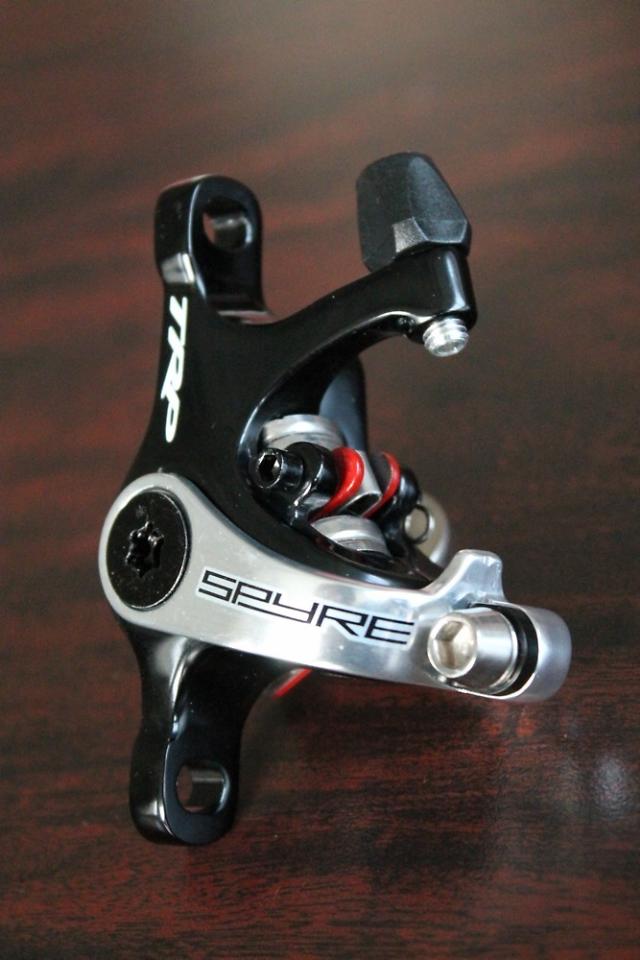
TRP, the high-end division of Tektro, launched a new mechanical (cable rather than hydraulically operated) disc brake called the Spyre which we first saw when we paid them a visit in Taiwan back in March.
We eventually got the Spyre in for review and were very impressed by both the performance and the ease of setup. All good... until 11 December when we ran a story under the headline “TRP recall Spyre and Spyre SLC mechanical disc brakes”. Oh no, not again!
This time the brakes could fail when the brakes were operated with extremely worn brake pads or no pads installed. The ball bearings inside the twin opposing ramps, a feature of the dual piston design, could be forced out and result in a reduction or complete loss of braking power. TRP said there had been one reported incident of this happening, with no injury.
Oh, and back in August Shimano issued a recall for their road mechanical disc callipers: BR-CX75, BR-R515 and BR-R315.
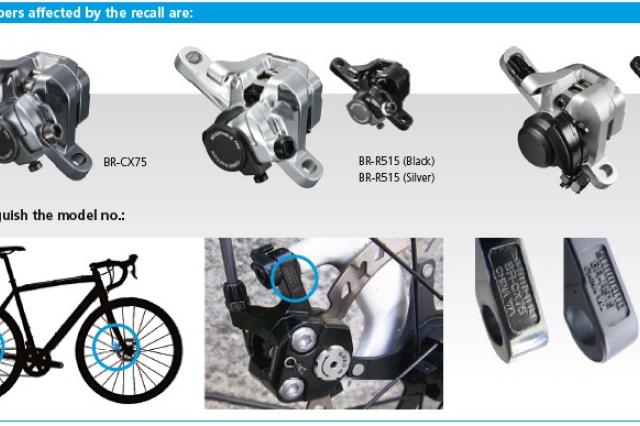
Shimano, SRAM (through their sub-brand Avid) and TRP all have massive experience in producing disc brakes and you might argue that the fact that three recalls involved disc brakes was entirely coincidental, but the high-profile nature of the problems is certain to have an effect on the adoption of disc brakes in the road bike market, at least in the short term.
New Shimano Ultegra… with disc brakes
More disc brake news came from Shimano back in June when they announced (quelle surprise!) that they’d be entering the road bike hydraulic disc brake world. We sent our best man, Dave Atkinson – and by ‘best’ I mean ‘biggest’ – out to Sicily in October to give them a whirl on Mount Etna.
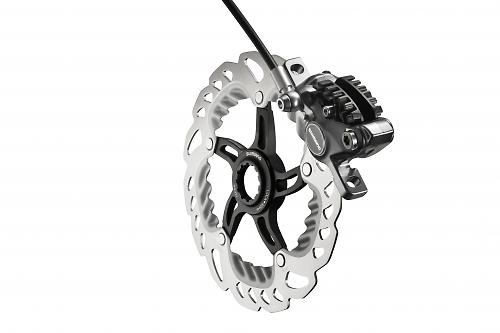
Shimano’s hydraulic disc brakes are part of a wider redevelopment of their second-tier Ultegra groupset which is available with either mechanical or electronic Di2 shifting. The disc brakes are only available for use with an electronic (Di2) system, though. Big Dave was impressed saying, “Overall the first impressions were very positve: easy modulated, and consistent, power in braking coupled with the simplicity of Di2 shifting.”
Cross' bikes sprout dis… (you get the picture)
Whether disc brakes are going to be a major feature on road bikes in the long term remains to be seen, but it’s pretty certain that they’re here to stay on cyclocross bikes for the foreseeable future, as we discovered at Eurobike. They were everywhere.
“As if by magic this year the overwhelming majority of 2014 cyclo-cross bikes sprouted discs, and so comprehensive has been the running dismount away from rim brakes that seeing a cyclo-cross bike with cantilevers was as exciting as seeing one with discs on was a few years ago, with only either the real race-bred or entry-level models featuring the instantly obsolete braking system,” said our man VecchioJo.
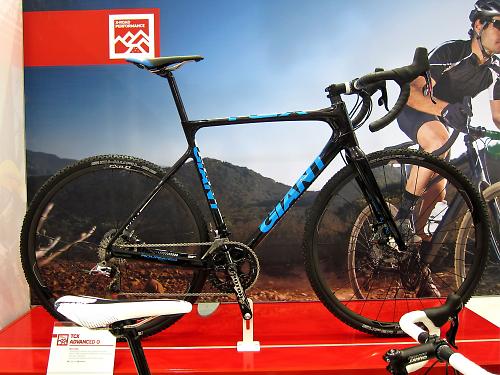
Giant have split their cyclocross bikes into three separate lineups: the TXC is their race-oriented sub-set, the Revolt is their Gravel Racing thing and the Anyroad is the leisure/commute option.
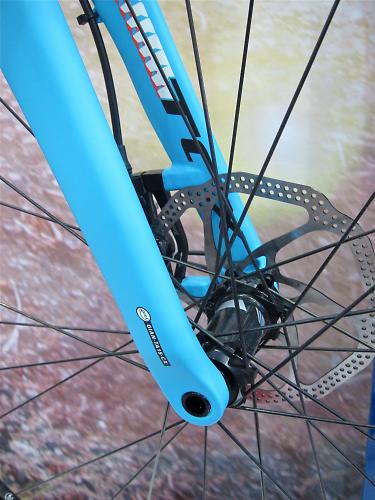
They’ve equipped each of their TXC bikes with disc brakes, with a 15mm thru axle front hub rather than using quick-release skewer to keep the wheel solidly in place under the increased braking forces. Swift have used a thru axle on their T-War frame too and other manufacturers have told us that they’re considering it. Will this be the way all CX bikes are going to evolve over the next few years? Only time will tell.
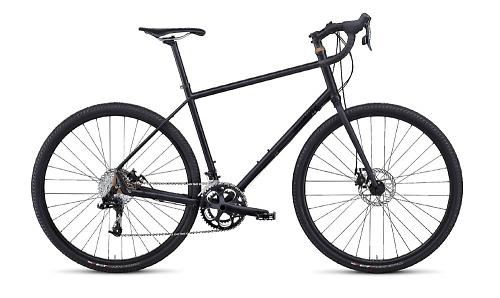
Specialized rocked up with their brand new AWOL – an adventure touring bike, or ultra-cross, UCX, CXtreme, or whatever you want to call it. This is a small genre but it’s certainly taking hold.
The AWOL comes with a steel frame and fork that makes it sturdy for pothole smashing or long continuous days in the hills. The AWOL Comp frame has adjustable dropouts and a split seatstay so it can be singlespeeded or have a belt drive slipped on. With full rack and mudguard mounts and a relaxed all-day geometry it’s a bit like a repackaged old tourer from decades ago.
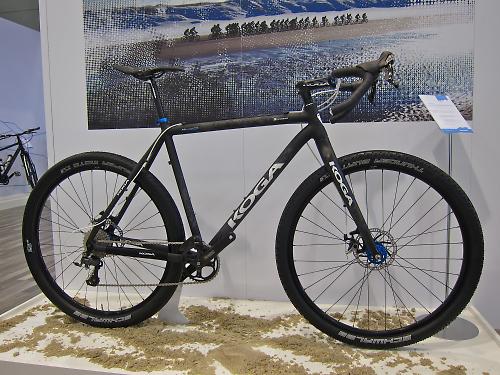
Koga’s Beach Racer is vaguely related, the only bike that we know of that’s designed specifically for racing on sand. It’s big in The Netherlands, apparently... mind you, so are windmills and clogs so we're not suggesting that beach racing is ever going to be massive over here. Essentially, the Beach Racer is a cyclocross frame that’s been widened and the rear triangle stretched to fit fatter tyres.
More gears

We mentioned Shimano’s Ultegra redesign in passing (above). It has moved from 10-speed to 11-speed (for that extra push over the cliff etc etc), the shift lever stroke is both shorter and lighter than before, and the lever hood shape is borrowed from Dura-Ace mechanical, which in turn took its cues from the slimline Di2 lever.
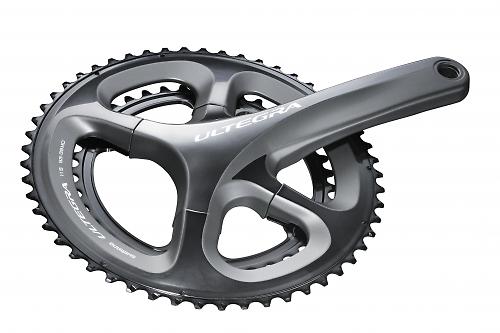
In fact, Shimano have made some big changes across the Ultegra range, largely using technology that has trickled down from top-level Dura-Ace 9000. Oh, and you can now get a 52/36-tooth chainset which is a great option for a lot of people.

New bikes
One of the biggest 2014 bike range launches came from Trek. Highlights include a redesigned aluminium 1 Series frame used across three different models. The profile of the down tube, for example, now comes with a curved leading edge and a truncated tail. Trek now use carbon forks across the entire 1 Series.
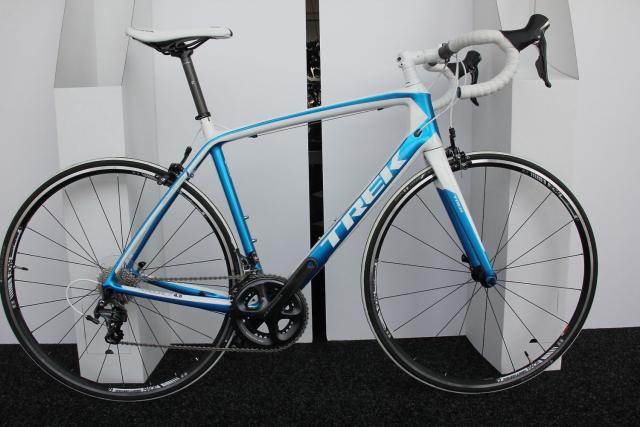
Much higher up the range, Trek have added the 4 Series Madones and Domanes to their Project One customisation programme for 2014 so you can style them and spec them according to your taste and budget.
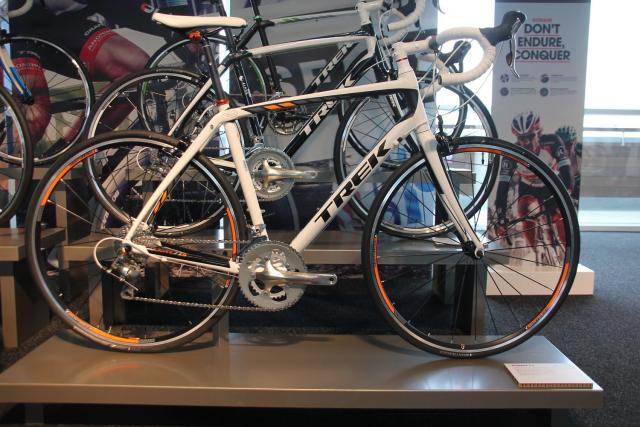
Trek have redesigned the IsoSpeed Decoupler on the 2-Series aluminium Domane. Go to our original article to discover what that’s all about.
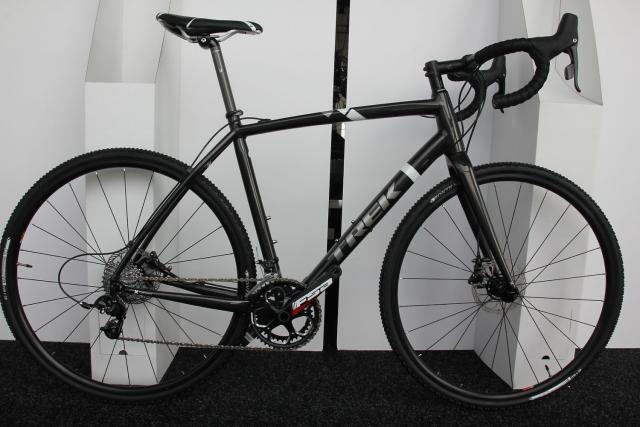
They also have three new aluminium cyclocross race bikes in their Crockett range. The models are all built around basically the same 200 Series Alpha Aluminium frame with a tapered head tube (1 1/8in to 1 1/2in) and a BB86.5 bottom bracket. The most affordable version is the Crockett 5 which comes in a disc only version at £1,400. It’s race-ready with Avid’s BB5 mechanical disc brakes and a mixed groupset based around Shimano 105 shifters and mechs.
Interestingly, Trek are moving away from model years now, saying that rather than launching new bikes into a particular model year and then updating them in subsequent years, they’ll be launching new bikes whenever they’re ready to go and upgrading as and when new tech and/or components become available. A few other brands are doing something similar.

Specialized don’t have any brand new frames for 2014 but they’ve brought in a raft of refinements and features trickling down through the price ranges. The big change to the Tarmac and Roubaix lineups is that now all models share the top-end SL4 platform, which includes size-specific carbon layups and frame shaping. There are more disc brake options on the Roubaix and CruX too.
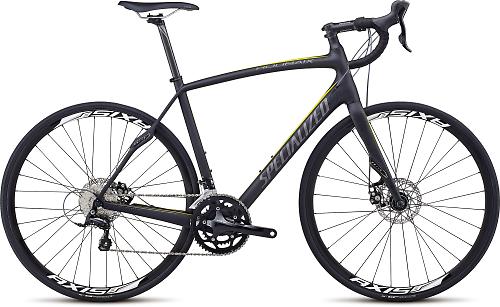
Specialized introduced a disc-equipped Roubaix last year, and for 2014 they’ve expanded the choice out to three bikes, but only two will be coming to the UK: the Expert with an Ultegra Di2 build, complete with Shimano’s new hydraulic disc brakes, and a Sora build with mechanical discs.
Sticking with US brands, Cannondale have pushed their flagship SuperSix Evo to an even lower price point courtesy of a revised frame design with external cable routing. Equipped with a Shimano 105 groupset and wheels, it’s priced at £1,699. They’ve added a new women-specific SuperSix Evo as well, and completely dropped the old SuperSix from the range.
The other big news from Cannondale is the unveiling of the Synapse Disc (yes, more discs!) – the Synapse being Cannondale’s road bike designed for comfort as well as speed. Two models, based on the aluminium version of the their new endurance road bike, show the company's interest in disc-equipped road bikes, although it's more of a small toe dip in the water than a fully-fledged commitment. The Synapse 105 Disc costs £1,099 and the Synapse Ultegra Disc is £1,399.
Mounting your Garmin
From high-tech bikes from the big manufacturers to, um, non-Garmin mounts for your Garmin. We’re tackling all the big stuff today. You can mock but this was actually one of our most popular tech stories of the year.

When you buy a Garmin Edge computer you get a little plastic mount that you attach to your stem or bars with a couple of O-rings (glorified elastic bands, essentially). With some packages you get an out-front mount too which can position the computer centrally just ahead of the stem for better visibility and to free up space.
Anyway, the world and his wife have released alternative Garmin mounts over the past couple of years, and we did a quick roundup of them, so take a look if you're in the market for a new one.
Mat has been in cycling media since 1996, on titles including BikeRadar, Total Bike, Total Mountain Bike, What Mountain Bike and Mountain Biking UK, and he has been editor of 220 Triathlon and Cycling Plus. Mat has been road.cc technical editor for over a decade, testing bikes, fettling the latest kit, and trying out the most up-to-the-minute clothing. He has won his category in Ironman UK 70.3 and finished on the podium in both marathons he has run. Mat is a Cambridge graduate who did a post-grad in magazine journalism, and he is a winner of the Cycling Media Award for Specialist Online Writer. Now over 50, he's riding road and gravel bikes most days for fun and fitness rather than training for competitions.
Latest Comments
- ajft 3 sec ago
Mine didn't brick after rain, it was just an effective partial brick its entire life. I had a 1st gen cycliq 12, it just never worked reliably,...
- hapaxlegomenon 4 hours 14 min ago
did you guys… or perhaps girls I suppose… really take points off because these tires are difficult to mount? 😭😭😭😭
- lonpfrb 5 hours 36 min ago
No, it's meant literally that the narcissistic sociopath in chief prefers all his loyal supporters in that position. I neither know, nor care, if...
- hawkinspeter 6 hours 26 min ago
Fire engine gets stuck behind east Bristol LTN bollard:...
- Rendel Harris 7 hours 12 min ago
Oh dear, you still don't understand, do you? Nobody has restricted his right to free speech, nobody has banned him from any platform, people are...
- David9694 8 hours 49 min ago
"Make me to know your ways, O LORD; teach me your paths." - Psalm 25:4
- anotherflat 9 hours 15 min ago
So uninsured?...
- Bigtwin 10 hours 11 min ago
Is the relvant authorites are so inept they can't even efficiently tax someone who sole relevant skill is that they drive a car quickly in a circle...
- Bigtwin 10 hours 19 min ago
Clarkson. Fat moron's icon talking tocix ill-informed bollix shocker. If ever there was someone who should just be put out to grass with the rest...
- Garethhall74 10 hours 54 min ago
It will be interesting what new features or functions the new Booky and Roam V3's have, plus if any new functions get added to the element app....

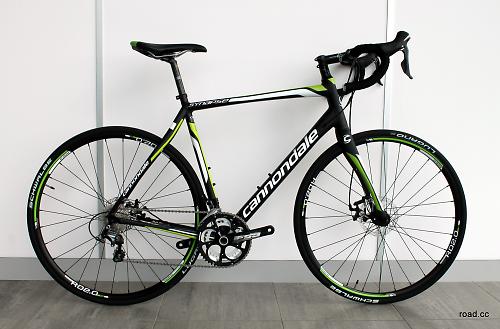
Add new comment
11 comments
Thank you 5th. Couldn't have explained it clearer myself. Of course I don't think rim brakes are better Simon E. I'd love a pair if Campag make them. I just said until they can be changed out in a pro race without rubbing they will not replace caliper. It's not my opinion - it's a pro team DS's opinion, voiced directly to me, who raced at the highest level himself. I believe he knows better than me. He might know better than you but I wouldn't bet on that of course.
After having hit a car that pulled out in front of me in Monday's commute to work and having not been able to effectively brake on wet rims, this muggle (and his ribs) can't wait to get disks on his road bike!
I notice in the article you mentioned Giants increased move into the Cyclecross market, and specifically gravel bikes through the introduction of their new Revolt bike.. When you going to do a test on this bike, seems a very interesting proposition.
What's slow about swapping out disc brake wheels?
I think slow is a poor choice of word. The real problem is guaranteeing that the disc / pad / caliper alignment is spot on with the replacement wheel. Until a standard is agreed (and we need another one of those like we need a third armpit) then you can't guarantee that you'll have drag-free brakes, and you won't find many pros who'll give Watts away on draggy brakes.
I can see the point of discs on bikes for a lot of riders, but I'm struggling to see why you'd want them for racing. I'd gladly take discs on my high-mileage all-weather commuter but have no need for them on my race bike.
A pro team director told me this year that unless they can make self adjusting disc brakes and a way of swapping wheels out as quickly as callipers disc brakes will never replace callipers in pro racing. And if the pros aren't using them the muggles aren't going to want them.
There are plenty of people willing to buy disc-equipped bikes, we're not all slaves to pro peloton fashion. Discs are turning up on all sorts of models already - Genesis' CdF and Equilibrium for example, while Giant and Boardman already offer only disc models for CX and there's a disc version of the Colnago C59, as ridden by Martyn Ashton & friends.
If you consider that R&D for 2013/2014 bikes was probably finalised up to 2 years ago I'm sure there will be lots more disc braked models soon.
And what exactly are the advantages of rim brakes?
The bad publicity occasioned by the recalls may stall the roll-out of discs for a short while, but nothing will stop it. Like it or not we will soon find it difficult to buy anything else.
I find this a good thing but others, like the 1960s motorists who cherished their drum brakes, will disagree. Life rolls on.
Never say never, but very unlikely to happen. Some people buy racing bikes to race, they want to go fast, so the frilly drag inducing cooling enhancements deemed necessary by shimano are not going to appeal. Any racer who is aware that a disk brake creates as much drag as is eliminated by good aero wheels won't touch them with a barge pole.
It was a disc heavy kind of year
Though there's every chance we might add some more things in when we've had a chance to gather our thoughts fully.
A very Disc heavy article